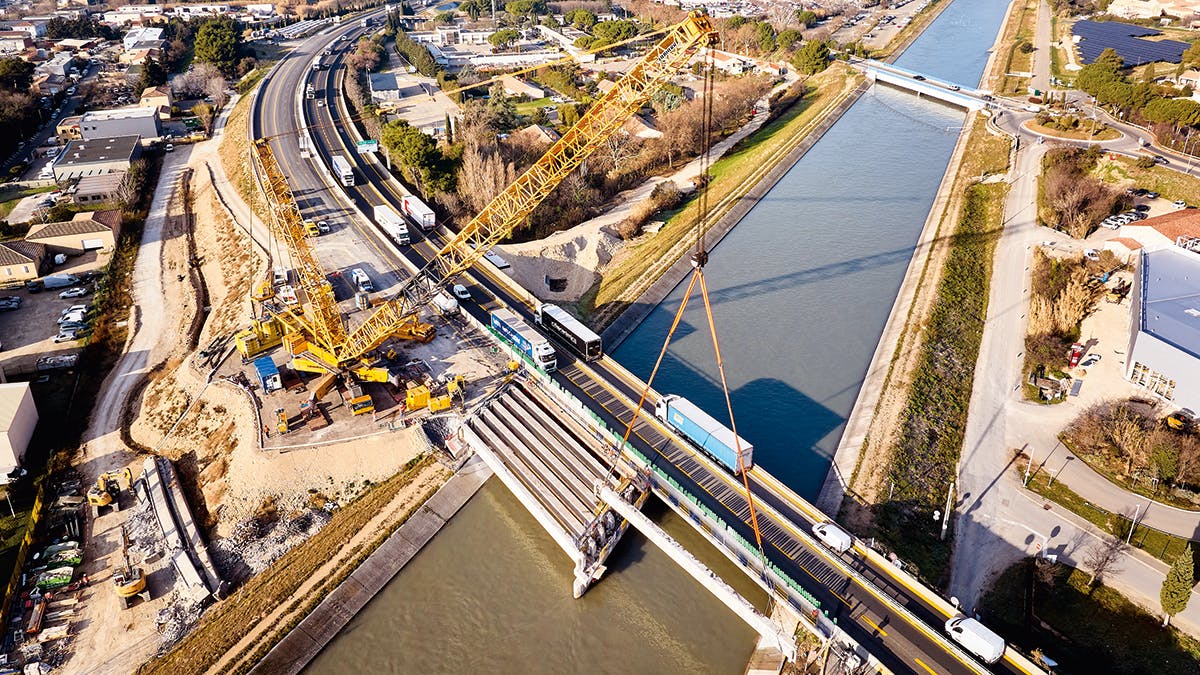
FRANCE
BUILDING ENERGY-EFFICIENT BUILDINGS
For LISEA, VINCI Railways subsidiary and operator of the SEA HSL, managing water consumption is high on the agenda as it builds its new train maintenance and storage facility in Marcheprime in Gironde. The building’s green rooftops will collect an estimated 9,560 m3 of rainwater. The project also integrates reused materials, such as reconditioned ballast. The project was awarded the BDNA silver label by Bâtiments Durables Nouvelle-Aquitaine (Sustainable Buildings Nouvelle-Aquitaine) in recognition of this environmental approach.


FRANCE
REUSING MATERIALS TO REDUCE THE CARBON FOOTPRINT
VINCI Autoroutes has committed to reducing the carbon footprint of work carried out on its network by 50% on average, compared with the 2019 baseline, for each operation by 2030. The company is already halfway towards its goal, having achieved a 25% reduction in late 2024. In order to reach that goal, VINCI Autoroutes is working with its project management and construction partners on several areas: using eco-design for its structures; increasing the use of low-carbon concrete, recycled steel and low-carbon energy for vehicles; and optimising worksite methods and the transport of materials. In 2024, 93% of the asphalt and aggregates from other operations was recovered in various forms, of which 48% was reused on VINCI Autoroutes worksites. And progress being made in the road industry means that the rate of materials reused on site is increasing regularly. During a maintenance campaign on the A87N, focusing on 12 km of the Angers ring road, all 44,000 tonnes of asphalt extracted from the old road were used to create 120,000 tonnes of recycled asphalt, which was produced by a mobile plant set up near the worksite. This approach will continue in 2025 on a 22-km section of the A87.
